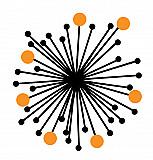The Four Children of Gratitude
What does the wise child say?
The wise child will notice parents’ expressions of gratitude and make good habits their own. You must guide this child in helping them and encouraging them to volunteer, to be optimistic, to understand other people, to be a true friend, to notice good things, look for them, and appreciate them. You must encourage this child to savor, absorb, and really pay attention to those good things. You should express your appreciation to that child when that child expresses appreciation by thanking somebody.
What does the wicked child say?
The opposite of gratitude is entitlement, which brings negative feelings like disappointment and frustration. But when we feel grateful, our world fills with positive emotions like love, compassion, enthusiasm, and confidence—and our satisfaction with life soars. What we’ve learned from the gratitude interventions that don’t work is that one size definitely doesn’t fit all. Just like we can’t tell a baby to laugh at dinnertime simply because it will feel good, we can’t just tell our teenagers to feel grateful so that they can reap the benefits.
So how can we help an entitled adolescent become happier through gratitude?
The first thing to remember is that teenagers’ unique developmental task is to individuate: to break away from you, the parent who is looking for a little appreciation.
Every time teens take your advice—about how to be happier, or by following your instructions for practicing gratitude—they are setting themselves up to remain dependent on you and your great wisdom. But their main goal as teens is to get you to recognize their wisdom, their independence. Herein lies the problem.
Gratitude makes most of us happier because it is such a social emotion; it cultivates our sense that we are connected to each other. And social connections—ties to friends and family and neighbors—are the very stuff of happiness. But if you are a teenager trying to prove your independence, gratitude can make you feel more beholden to your parents or teachers. Which doesn’t feel good.
This doesn’t mean that we should give up on teaching our teens to feel and express more gratitude in their lives. Here are some suggestions for practicing gratitude with teenagers:
(1) Go at it indirectly, by fostering altruism rather than gratitude. Helping others evokes feelings of gratitude, compassion, and confidence in people of any age.
(2) Let teens lead. One size doesn’t fit all when it comes to practicing gratitude—and a gratitude practice is going to be a lot less effective if it is seen as a chore or an assignment. So tell teens you want them to design a gratitude practice for your whole family this year. “You are old enough: You design a new tradition for us!” And by all means, let them take the credit, even if they come up with something you suggested weeks ago.
(3) Allow snarkiness, teasing, and humor in your expressions of gratitude. My dad used to ask us for reasons we were grateful for the people we were complaining about, and this lead to a lot of sarcastic comments like, “Well, I’m grateful I don’t have any classes with her.” Sometimes teen gratitude is, well, a little minimalist.
(4) Use gratitude to cultivate the growth mindset in difficult times. What did you learn from that terrible experience? What good came out of it, despite the difficulty? The aim is to get to something along the lines of, “Thank goodness that X happened, because otherwise I wouldn’t have had Y opportunity!”
(5) Be persistent. When teens feel authentic gratitude, it is a positive emotion for them just like for everyone else. When they create a gratitude practice that works for them, feelings of gratitude will become habitual, hopefully built into their daily lives. Even if they resist heartily at first—remember, that is their job as adolescents—I have heard many, many stories of gratitude resistors who blossom into appreciative young adults.
As Mike Riera artfully describes in his book Staying Connected to Your Teenager, kids need to struggle with and for their autonomy, and this will sometimes mean struggling with feelings of entitlement and dependence. Our job as a parent is to help our teens become experts on themselves—including what they feel grateful for—and to help them discover what they want for themselves.
What does the simple child say? What about the child who doesn’t know how to ask a question?
Help these children. An attitude of gratitude helps us thrive. Try these steps to instill a mind-set of gratitude in your little ones.
- Say "Thank you." When "thank yous" are instilled in our vocabulary at home, a lifelong practice begins, even if it doesn't stick at first. You can gently restate a sentence with polite language inserted, or suggest saying "Thank you" together.
- Live it. Set an example and show appreciation by conveying you paid attention to real effort: "Your room looks so nice with the toys in their bins. I'm so happy that you remembered to put them away!"
- Teach through role play. If your little one is too shy to say "thank you" in a social setting, they can pretend to teach their stuffed animals or dolls to do so, while you play along.
- Create daily or weekly routines. A regular question, "What are you most thankful for today?" can serve as a comforting routine at bedtime or a highlight of a weekly dinner ritual.
- Give concrete examples. At dinner, you can play the Rose and Thorn game, where the person whose turn it is to speak holds a rose and tells about one rose (a good thing) and one thorn (a challenging thing). A metaphor like the rose helps children develop gratitude even when things aren't going their way. Keeping the rose in a vase all week serves as another reminder of coping with natural ups and downs. Books like The Giving Tree, Have You Filled a Bucket Today? and Mama Panya's Pancakes offer simple, powerful metaphors of virtues.
- Set expectations when shopping. Melanie Etemad of Bryn Mawr, PA shared a useful approach that her husband, a psychiatrist, came up with when their daughter Elyse was just two: "We’d say today is a 'look' day. Just like going to the museum, we enjoy the beautiful things, but we aren't planning to buy anything. ... We also tried to ensure that there were more 'look' days than 'buy' days, specifically to inoculate against the idea of always buying things, knowing that it breeds discontent. Now, at age six, Elyse knows that most of the time when we go out, we are not necessarily planning to buy anything and has the habit to ask if today is a 'look' day or a 'buy' day."
- Make giving and volunteering a habit. Set aside toys and clothing in good condition. Deliver the items to a deserving cause together. Talk about the process and why you care. Tap into organizations like Global Giving that offer a virtual marketplace for making a difference.
- Create gratitude gift lists. Alongside a holiday or birthday gift wish list, for every item, family members can list something they are grateful for. These are the "priceless" gifts. By generating the list in a beautiful way, you demonstrate how valuable the alternate list is; it can be a keepsake for years to come.
- Thank those who serve. Your example of acknowledging those who quietly make a difference in your life, from the bus driver to the person sweeping up the aftermath of a family lunch out, sends a powerful message to your children. Likewise, organizations like Operation Gratitude and Blue Star Families remember those serving in the military. Kathy Roth-Douquet, Founder and Chair of Blue Star Families, says, "In addition to a thank-you letter, we ask the participant to pledge to do some form of community service ... thanks and appreciation is best when it involves action, and a sense of all being in a worthwhile effort together."
- Be patient. Kids can't be cajoled into showing appreciation, but your gentle efforts and examples will instill gratitude as a way of life.
Inspired to create
your own Haggadah?
Make your own Haggadah and share with other Seder lovers around the world
Have an idea
for a clip?
People like you bring their creativity to Haggadot.com when they share their ideas in a clip
Support Us
with your donation
Help us build moments of meaning and connection through
home-based Jewish rituals.
OUR TOP CONTRIBUTORS
Passover Guide
Hosting your first Passover Seder? Not sure what food to serve? Curious to
know more about the holiday? Explore our Passover 101 Guide for answers
to all of your questions.






















